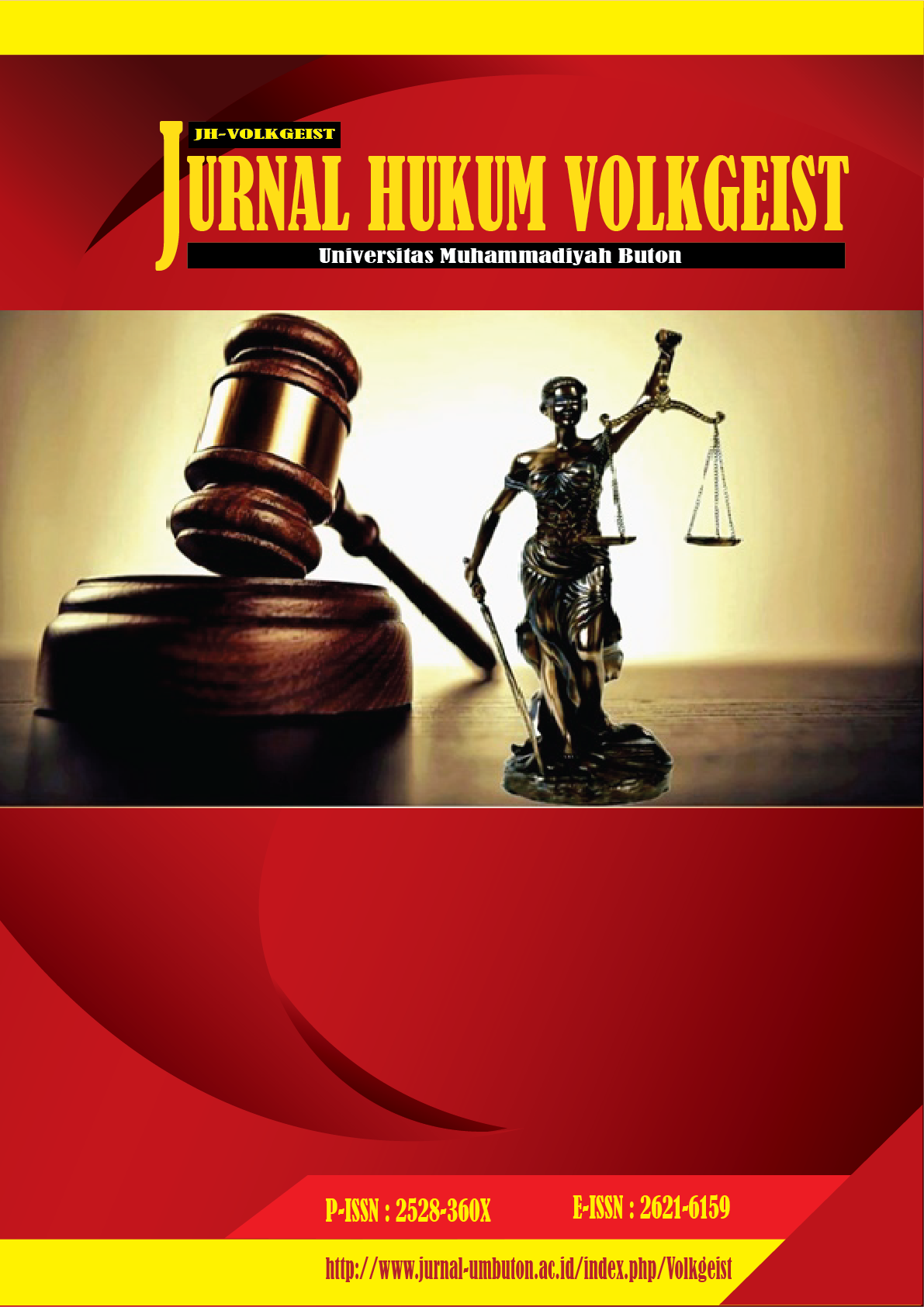Improving the Competence of State Civil Apparatus in the Vuca Era
DOI:
https://doi.org/10.35326/volkgeist.v6i2.2144Keywords:
Competency Improvement, ASN, Vuca EraAbstract
Indonesia is facing the Industrial Revolution 4.0 which affects aspects of human life. This era is often characterized by the condition of VUCA, which stands for Volatility (turbulence), Uncertainty (uncertainty), Complexity (complex), and Ambiguity (unclear). The importance of increasing competence in the State Civil Apparatus (ASN) and the impact of the VUCA era will also be increasingly felt. with the aim that ASN with qualified leadership qualities. This research is intended to provide management recommendations to improve the professionalism of ASN. This type of research is qualitative (doctrinal). Qualitative normative research is intended to formulate the basic problems being faced by using a measurable analytical knife. The results of this paper are recommendations for succession management which are suggested to be implemented in government agencies as well as the work culture of ASN in the future by obtaining appropriate cadres of leaders in facing the challenges of changing eras.
Downloads
References
Allen, N., & Meyer, J. (1990). The Measurement and Antecedent of Affective, Continuance and Normative Commitment to Organization, part 1. Journal of Psychology, 63, 1–18.
Asper, P., & Corte, U. (2019). What is Qualitative in Qualitative Research. Qualitative Psycology, 1(42), 142.
Haniru, L. Ode. (2016). Analisis Hukum Kewenangan Pemerintahan Daerah Dan Kualitas Aparatur Daerah (Studi Di Kantor Walikota Baubau). 1(1), 1–15.
Hardiyansyah. (2011). Kualitas Pelayanan Publik Konsep, Dimensi, Indikator dan Implementasinya. Gava Media.
Mardawani, & Relita, D. (2019). Strategi Pemerintah Daerah Kabupaten Sintang Dalam Mewujudkan Visi Pemerintahan dan Good Governance. JUrnal Ilmiah Pendidikan Pancasila Dan Kewarganegaraan, 4(1), 109.
Peraturan Pemerintah. (2004). Peraturan Pemerintah Nomor 42 Tahun 2004 tentang Pembinaan Jiwa Korps dan Kode Etik Pegawai Negeri Sipil.
PERMENPAN. (2017). Peraturan Menteri Pendayagunaan Aparatur Negara Nomor 38 Tahun 2017 tentang Standar Kompetensi Jabatan Aparatur Sipil Negara.
Robbins, P. S., & Coutler, M. (2016). Human Resources Management. Salemba Empat.
Rustandi. (2019). Kinerja Manajemen Sumber Daya Manusia di Era Disrupsi. Kebijakan. Jurnal Administrasi, 10(2), 67.
Salam, S. (2020). Rekonstruksi Paradigma Filsafat Ilmu : Studi Kritis Terhadap Ilmu Hukum Sebagai Ilmu. Ekspose: Jurnal Penelitian Hukum Dan Pendidikan, 18(2), 885–896. https://doi.org/10.30863/ekspose.v18i2.511
Salam, S., Mustika Suhartono, R., & La Dee, M. (2021). Construction of The Concept of Building Populist Economic Law. Audito Comparative Law Journal (ACLJ), 2(3), 119.
Sutrisno, E. (2009). Manajemen Sumber Daya Manusia : Edisi pertama. Kencana Prenada Media Group.
Undang-Undang Negara Republik Indonesia. (2014). Undang-Undang Nomor 5 Tahun 2014 Tentang Aparatur Sipil Negara.
Wibowo. (2016). Manajemen Kinerja. PT RajaGrafindo Persada.
Wilson, B. (2012). Manajemen Sumber Daya Manusia. Erlangga.
Downloads
Submitted
Accepted
Published
Issue
Section
License
- Author retains the copyright and grants Jurnal Hukum Volkgeist the right of first publication of the work simultaneously licensed under the Creative Commons Attribution-ShareAlike 4.0 License that allows others to share the work with an acknowledgment of the work's authorship and initial publication in this journal
- The author is able to enter into separate, additional contractual arrangements for the non-exclusive distribution of the journal's published version of the work (e.g., post it to an institutional repository or publish it in a book) with the acknowledgment of its initial publication in this journal.
- The author is permitted and encouraged to post his/her work online (e.g., in institutional repositories or on their website) prior to and during the submission process, as it can lead to productive exchanges, as well as earlier and greater citation of the published work (See The Effect of Open Access).









.png)































